Starting a vegetable garden can feel overwhelming, especially if you’ve never grown anything before.
But don’t worry, gardening is one of those hobbies you learn by doing. If you’re wondering how to get started with vegetable gardening, the key is to start small and take it one step at a time.
You don’t need a big yard, expensive tools, or years of experience. You only need a small space, the right basics, and a little patience.
When I first started gardening, I grew a few plants in pots on a small balcony. That simple setup helped me understand watering, soil, and sunlight without feeling overwhelmed. Starting small is often the fastest way to succeed.
Recommended Beginner Guides:
- Vegetable Gardening (simple soil recipes for beginners)
- Raised Bed Gardening (step-by-step setup, soil, and planting)
- How to Grow Lettuce (easy crop for first-time gardeners)
- How to Grow Garlic (from planting to harvest)
- Best Seed Starting Mix (simple soil recipes for beginners)
Why Start a Vegetable Garden?
Vegetable gardening is one of the most practical ways to get into gardening.
Here’s why many beginners start with vegetables:
- Fresh, healthy food: Homegrown veggies taste better and contain nutrients.
- Save money: Growing your own food can cut down on grocery bills.
- Eco-friendly: Reduce your carbon footprint by avoiding store-bought produce shipped long distances.
- Stress relief: Gardening is a relaxing and rewarding hobby.
- Quick results: Many vegetables grow fast, which keeps motivation high.
Who This Vegetable Gardening Guide Is For
This guide is made for true beginners who want clear, practical advice.
It’s ideal if you:
- Want to grow food, not just flowers
- Have a backyard, raised bed, or balcony
- Prefer simple, low-cost methods
- Want reliable results before trying advanced techniques
Vegetable Gardening for Beginners: The Simple Path to Get Started
If you’re completely new, this simple progression helps you avoid overwhelm and stay motivated:
- Start with easy vegetables like lettuce, garlic, and herbs
- Choose a small space, containers, raised beds, or a compact garden plot
- Learn the basics of soil, sunlight, and watering
- Improve gradually with compost, better soil, and simple tools
Many home gardeners find that starting small and focusing on vegetables leads to faster success and long-term motivation.
Step 1: Start with Easy Vegetables to Grow
The best beginner gardens start with plants you actually eat and that don’t require much maintenance.
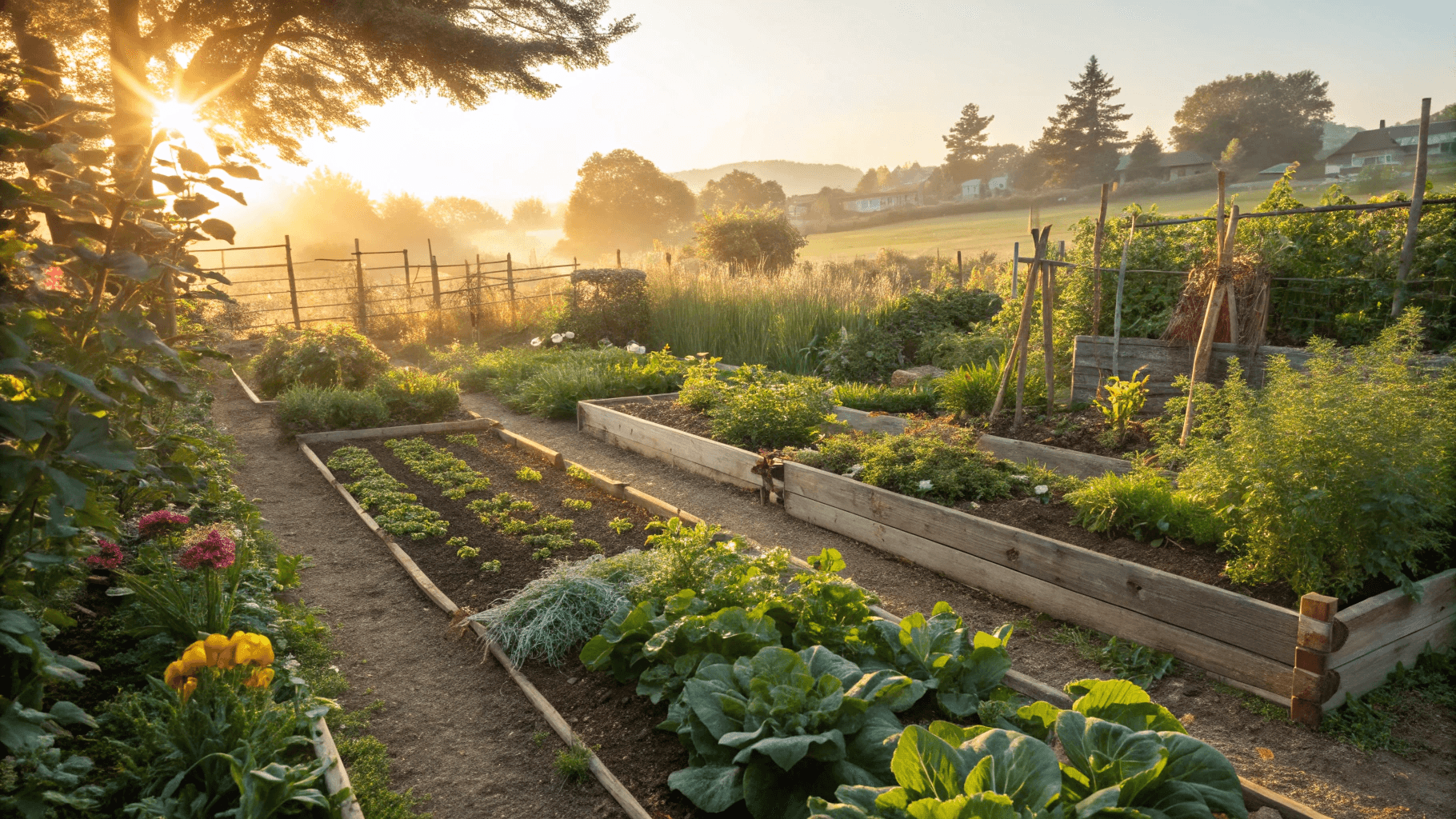
Easy Vegetables for Beginners
These crops grow fast, forgive mistakes, and build confidence:
| Vegetable | Harvest Time | Best Temperature | Planting Time | Spacing | Light | Common Issue |
|---|---|---|---|---|---|---|
| Lettuce | 30–60 days | Cool (10–20°C) | Spring / Fall | 15–30 cm | Sun / Part shade | Bolting |
| Tomatoes | 60–90 days | Warm (18–30°C) | After frost | 45–60 cm | Full sun | Cracking |
| Cucumbers | 50–70 days | Warm (18–30°C) | Late spring | 30–45 cm | Full sun | Mildew |
| Spinach | 30–45 days | Cool (10–18°C) | Spring / Fall | 10–20 cm | Sun / Part shade | Bolting |
| Garlic | 7–9 months | Cool start | Fall | 10–15 cm | Full sun | Small bulbs |
Avoid starting with difficult crops like cauliflower, celery, or melons. Simple wins matter early.
Step 2: Planting Seeds vs Seedlings
Don’t plant too many plants. Start with 5-6 vegetables and learn how they grow in your space.
Also, follow the calendar, as temperatures vary across different zones, and each plant has specific optimal temperature requirements to begin growing.
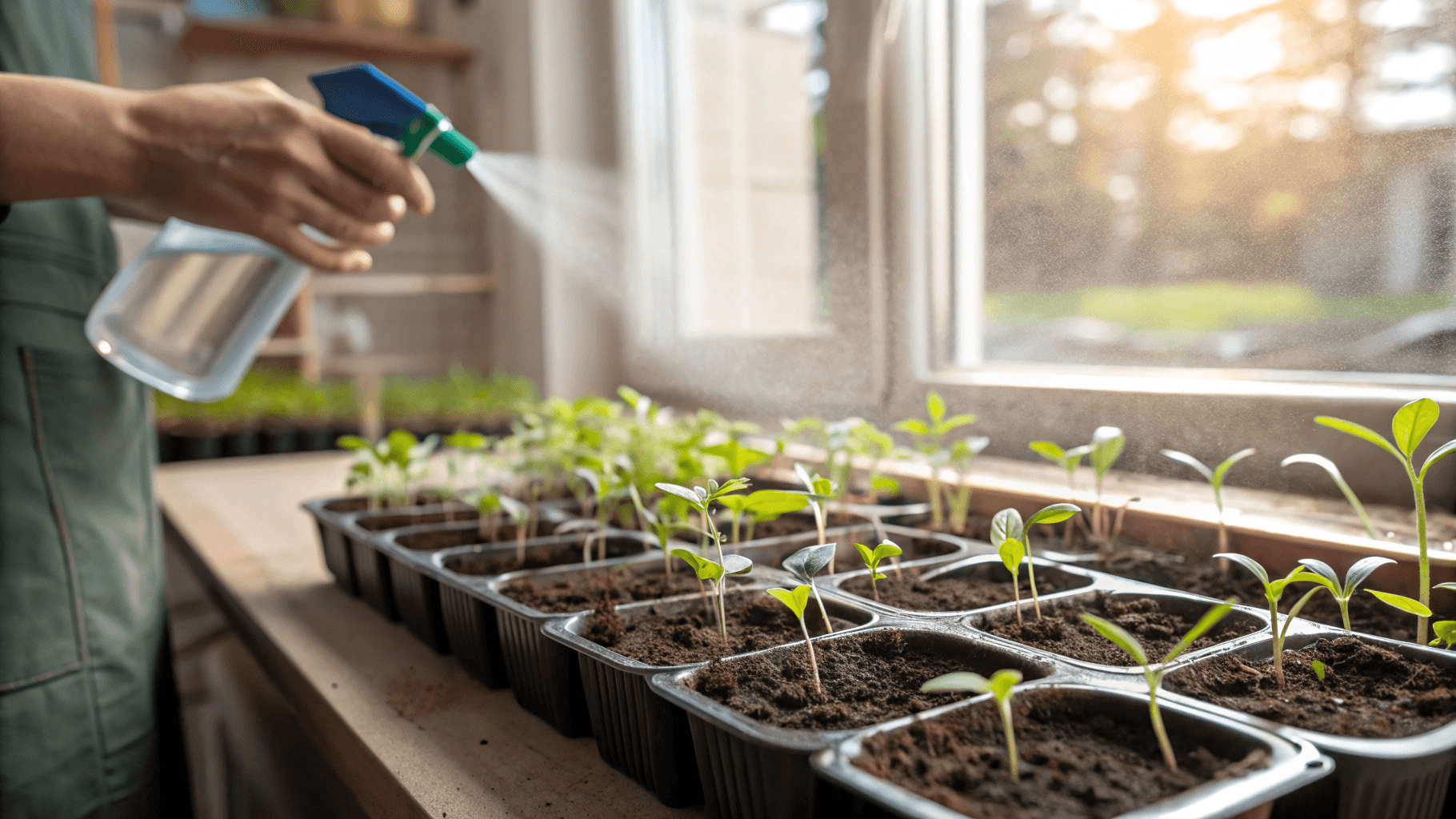
When to Use Seeds
Follow the instructions on your seed packets or plant tags for spacing and depth.
Seeds are best when:
- You want more variety
- You’re growing leafy greens or herbs
- You’re planting early in the season
- Some veggies, like beans and radishes, can be planted directly in the ground
Seeds are cheaper and ideal for learning. Always buy seeds from trusted or verified seed suppliers. Poor-quality or old seeds often have low germination rates and lead to frustration early on.
When to Buy Seedlings
Seedlings are better when:
- Growing tomatoes, peppers, or slow crops
- You want faster results
- Weather is unpredictable
Common Beginner Mistakes
- Planting seeds too deep
- Overwatering seedlings
- Starting too many plants at once
Step 3: Choose Your Garden Type (Containers, Raised Beds, or Ground)
You don’t need a traditional garden to grow food. If you don’t have much space, don’t worry, many veggies grow well in containers.

Container Gardening
- Best for balconies, patios, and small spaces
- Easy to control soil and watering
- Ideal for lettuce, herbs, and compact vegetables
Raised Bed Gardening
- Excellent drainage and soil control
- Easier on your back
- Great for beginners who want structure
In-Ground Gardening
- Lowest cost
- Requires more soil preparation
- Best if you already have good soil
Related: Raised Bed Gardening for Beginners (how to build, fill, and plant raised beds)
Step 4: Choose the Best Location for a Vegetable Garden
The location of your garden can affect how well plants grow. This also helps you make the best use of my space and resources.
Most vegetables need 6-8 hours of direct sunlight per day to grow and produce well. Fruiting crops like tomatoes, peppers, and zucchini need full sun, while leafy greens can tolerate some shade.
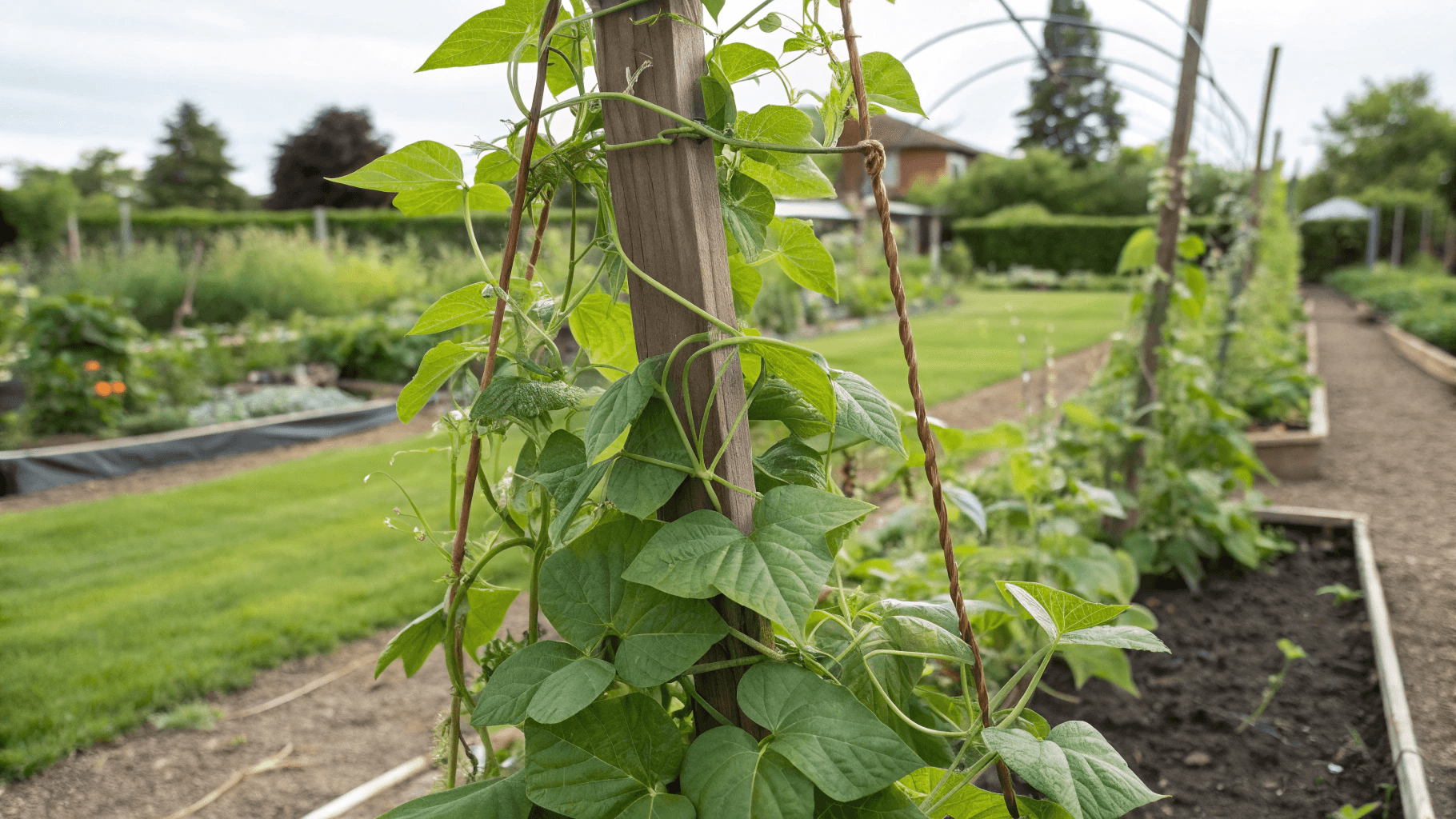
Choose a spot that:
- Gets consistent sunlight
- Is easy to reach for watering and maintenance
- Has good airflow
Avoid areas shaded by buildings or trees for most vegetables. These can block sunlight and reduce airflow.
If you’re new, start small. A 10×10 ft area, a raised bed, or a few containers is enough to learn without waste or overwhelm.
Step 5: Understand Sunlight Requirements
Plants have different needs for sunlight. Some grow in full sun, while others prefer shade.
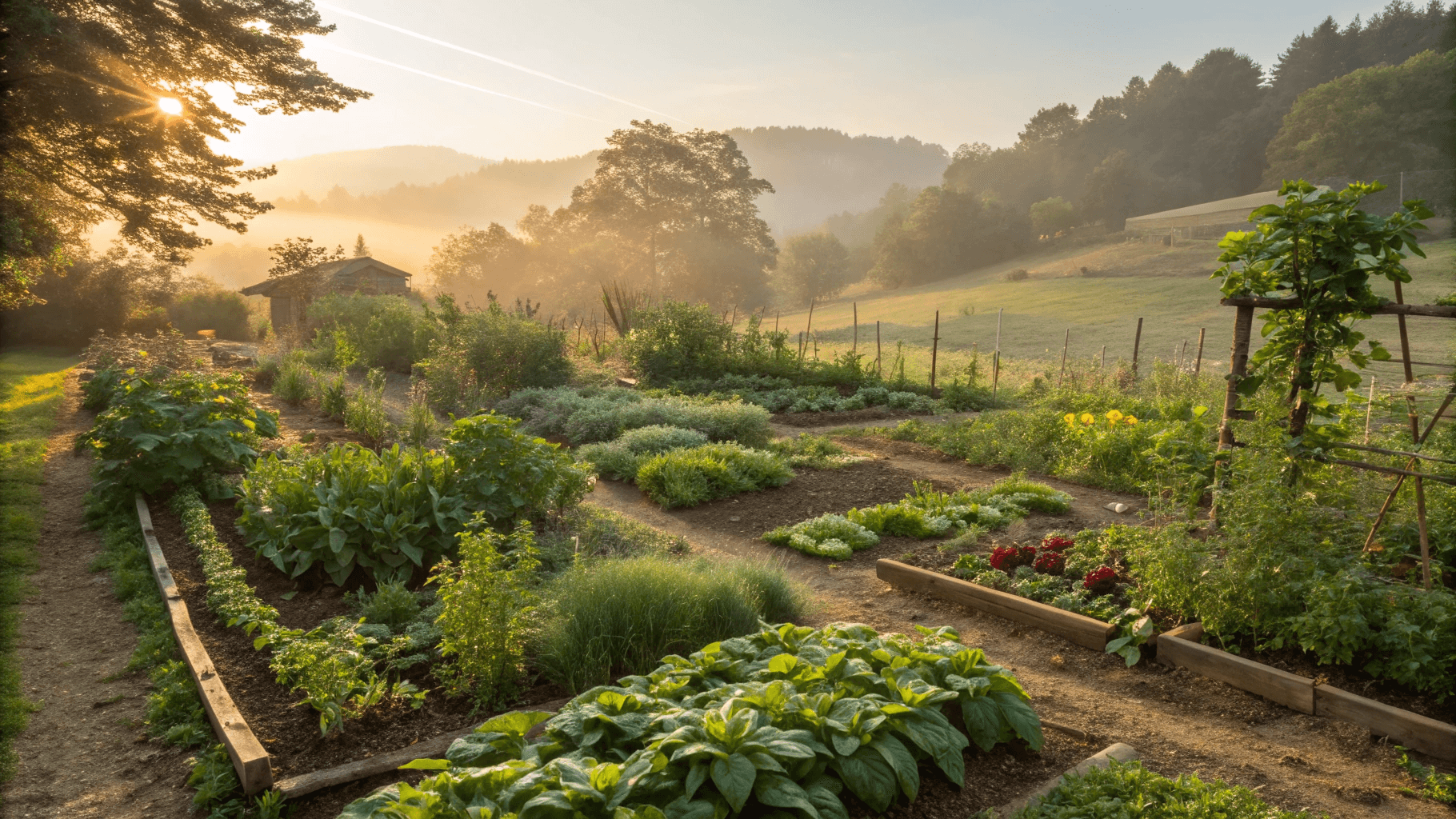
- Full sun: 6-8 hours per day (best for tomatoes, peppers, garlic)
- Partial shade: 3-6 hours per day
- Shade: Less than 3 hours (limited vegetable options)
You should observe your garden area at different times of the day to see where sunlight falls.
Step 6: Understand Soil Basics (Without Overthinking It)
Healthy soil is the foundation of gardening success.
Vegetables grow best in loose, well-draining soil that holds moisture without becoming compacted.
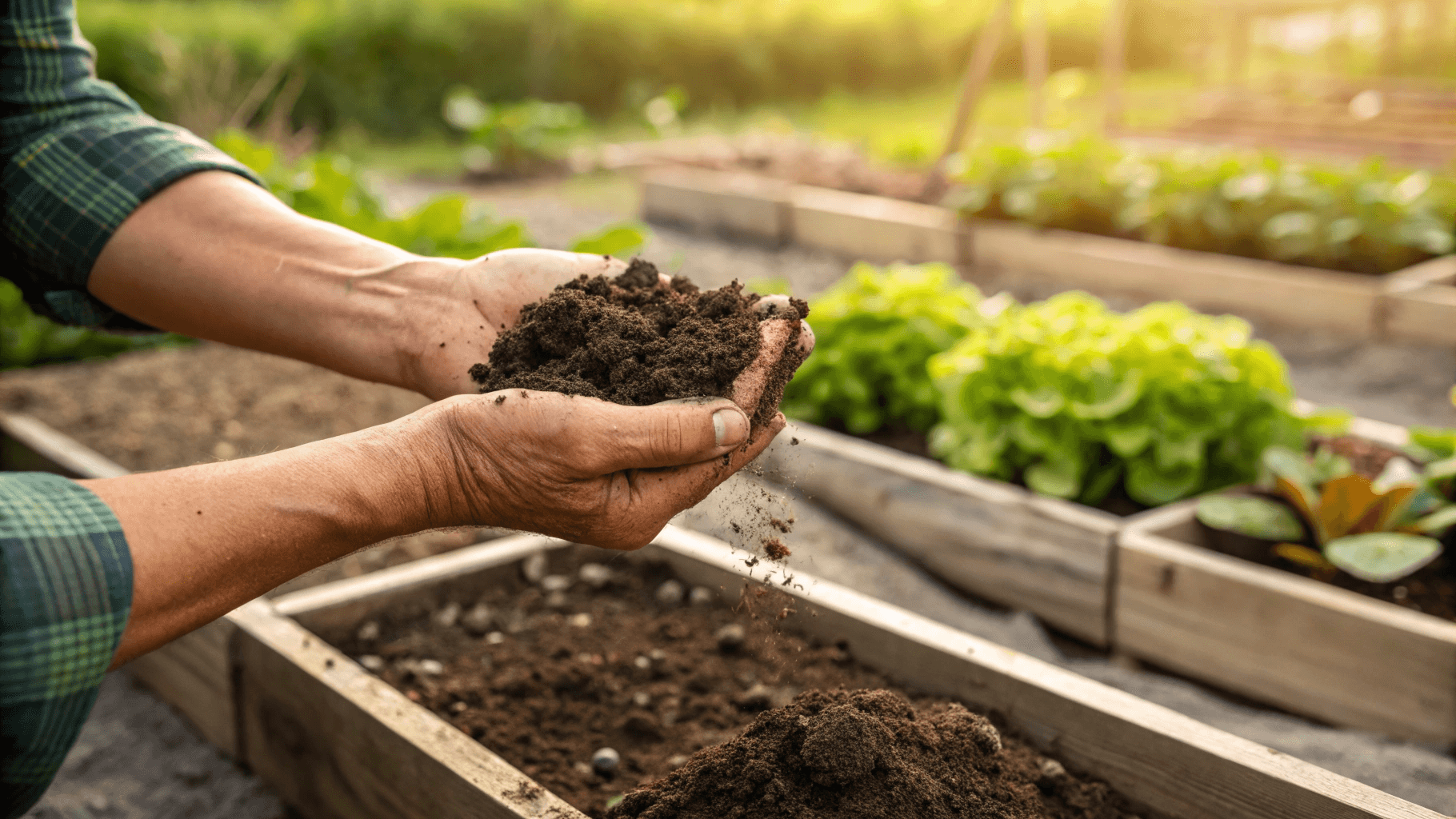
Common Soil Types
Each has unique characteristics that influence water drainage and nutrient availability.
- Sandy soil: Drains fast, dries quickly
- Clay soil: Holds water, drains slowly
- Loamy soil: Ideal mix of sand, silt, and clay
You can test your soil by digging a small hole and checking its texture.
Helpful guides:
Garden Soil vs Potting Mix
Soil matters because it holds water, nutrients, and oxygen for plant roots. The wrong soil is one of the most common reasons beginner gardens fail.
Garden soil is best for:
- In-ground beds
- Raised beds mixed with compost
It is heavier, holds nutrients well, and improves over time.
Most beginners improve soil by adding compost, which helps with drainage, nutrients, and structure.
Potting mix is best for:
- Containers
- Pots
- Balcony or indoor gardening
Potting mix is lighter, drains faster, and prevents root rot in containers.
Beginner rule: Use garden soil + compost in the ground, and potting mix in containers.
Why Compost Matters
Compost is decomposed organic matter that:
- Feeds plants slowly
- Improves soil structure
- Helps soil hold water without becoming soggy
Even a small amount of compost makes soil easier to work with and healthier for plants.
You don’t need to make your own compost at first; store-bought compost works perfectly for beginners.
Prepare Your Soil
Improving soil with compost and organic matter is often more important than adding fertilizer.
- Test your soil: Use a home testing kit to check the pH level. Most veggies prefer a pH between 6.0 and 7.0.
- Add compost: Mix in compost or aged manure to improve soil fertility.
- Loosen the soil: Use a garden fork or tiller to loosen the soil, making it easier for roots to grow.
If growing in containers or raised garden beds, use a high-quality potting mix designed for vegetables.
Step 7: Plan a Simple Garden Layout
Grouping plants with similar needs makes care easier.
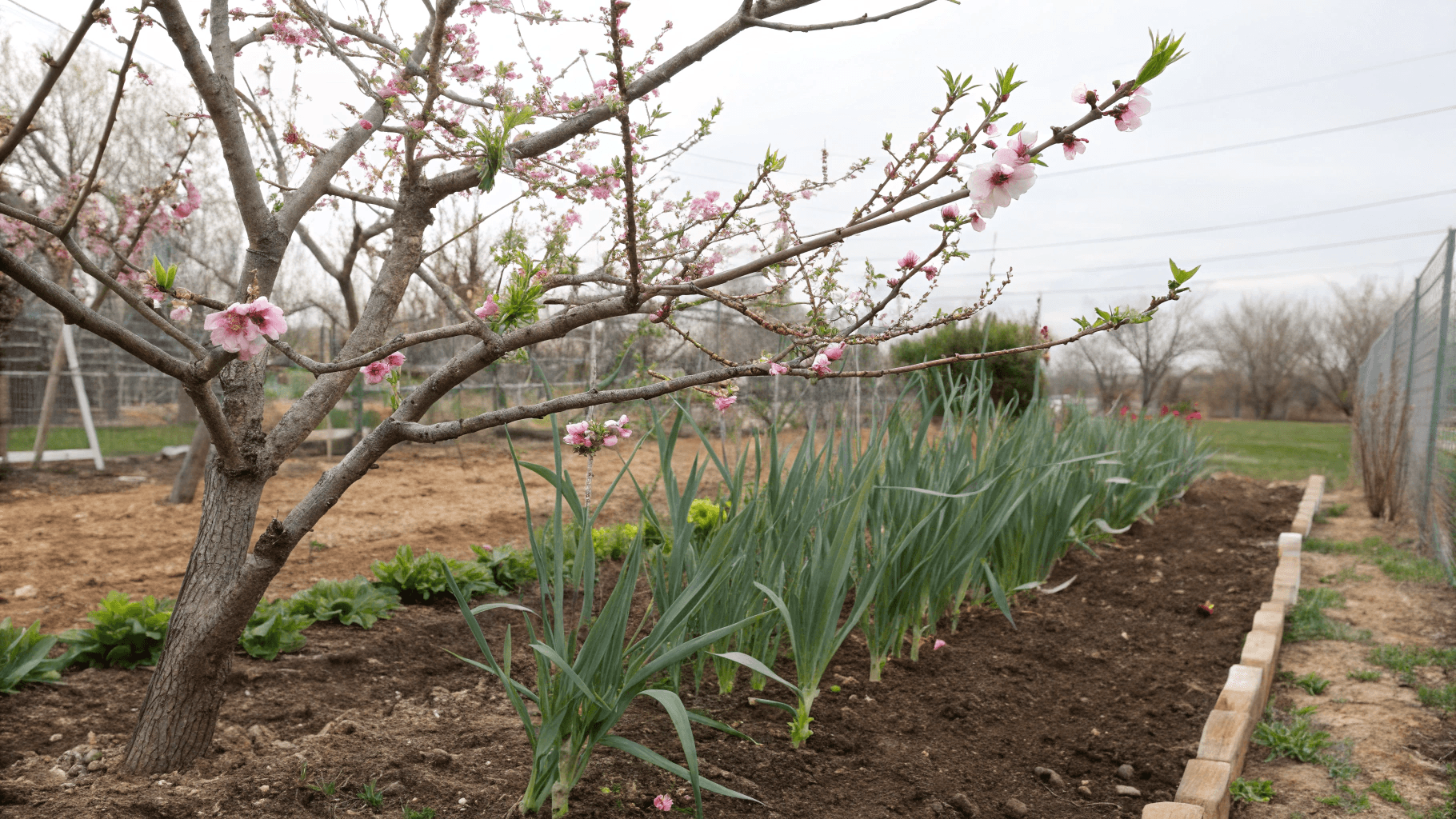
- Keep vegetables with similar watering needs together
- Leave space for airflow
- Don’t overcrowd
Raised beds, containers, or small in-ground garden sections are easier than scattered planting.
Companion Planting and Garden Pairing
Companion planting means growing plants together that benefit each other.
Benefits:
- Fewer pests
- Better growth
- Efficient use of space
Examples:
- Lettuce + garlic (pest deterrence)
- Tomatoes + basil (growth and flavor)
- Carrots + onions (root balance)
Companion planting is optional, but even simple pairings help reduce problems naturally.
Step 8: Know Your Climate and Planting Times
Timing matters. Each plant has specific optimal temperature requirements to begin growing.
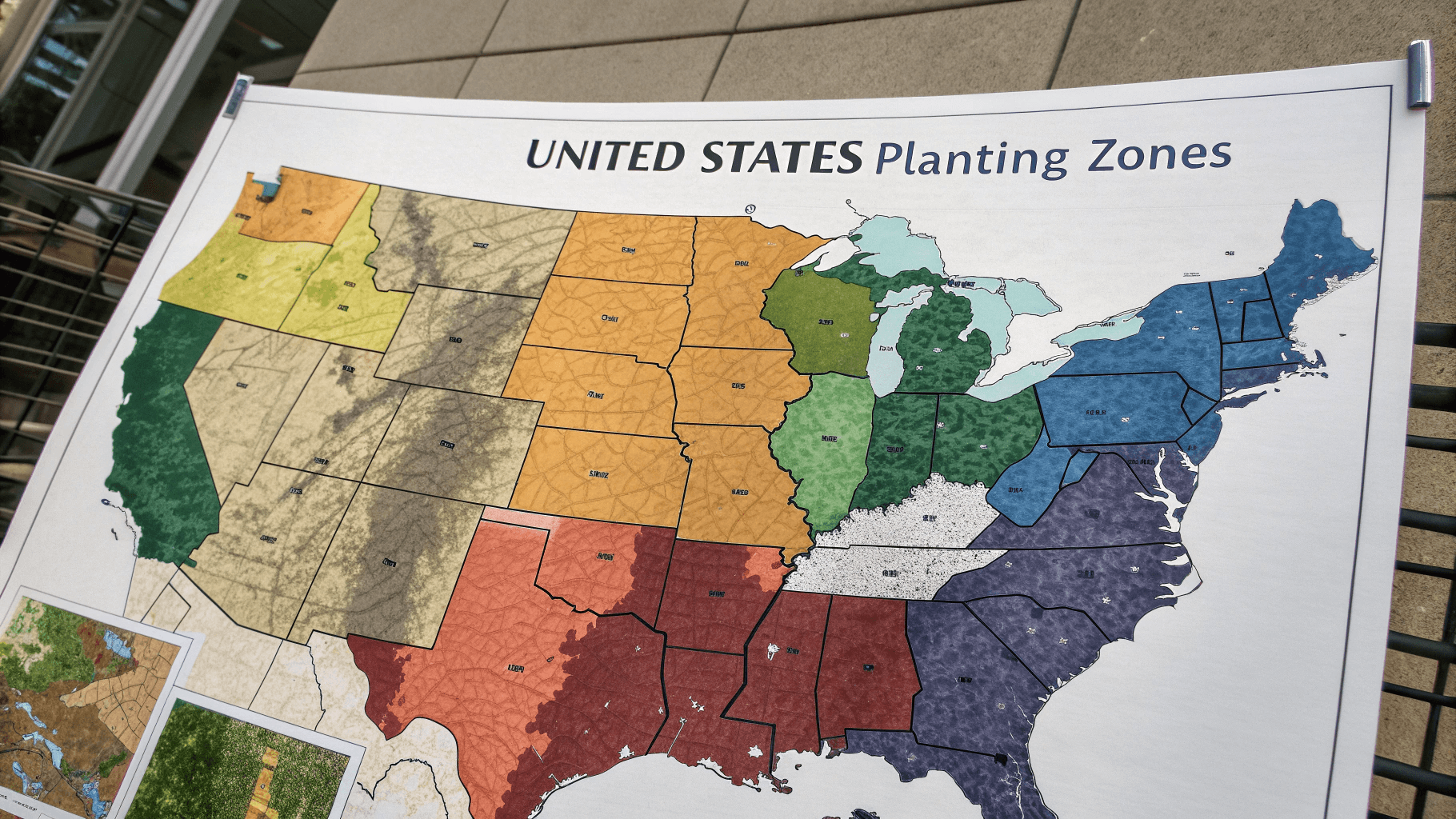
Before planting, check your USDA growing zone or local climate to see which plants grow in your area.
- Cool-season vegetables: (lettuce, spinach, peas)
- Warm-season vegetables: (tomatoes, peppers, zucchini)
Create a simple planting calendar
Creating a planting calendar is a smart way to keep your garden organized. I keep a simple garden planner and, each season, I plan where to plant, what to grow, and how many plants I’ll start.
Start by
- Note the last frost date for the area
- Note when each plant should be planted
Example:
- Tomatoes: Start indoors 6-8 weeks before last frost
- Lettuce: Direct sow in early spring or fall
Step 9: Gather Basic Gardening Tools
You don’t need much to start. Here are the essential tools I recommend and tips for keeping them in good shape.
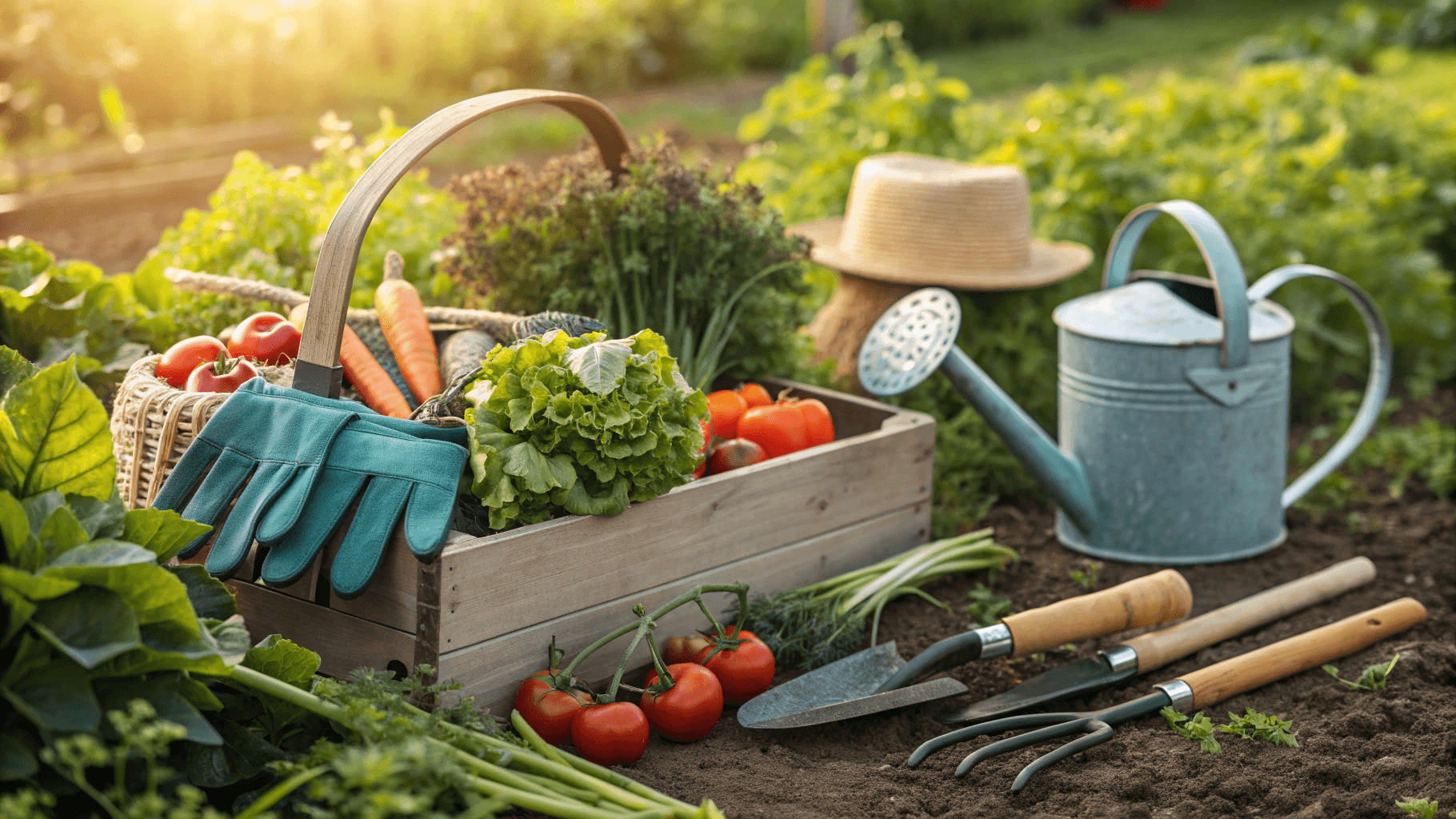
Essential Tools for Beginners
- Gloves: Protecting the hands from dirt and scratches.
- Hand trowel: Great for digging small holes and transplanting plants.
- Pruning shears: Useful for trimming and shaping plants.
- Watering can: Helps watering your plants gently.
- Garden fork: Assists in loosening soil and turning compost.
- Rake: Helps to clear leaves and smooth out soil.
It’s best to choose solid options that will last for many seasons.
Maintaining Your Gardening Tools
Taking care of your gardening tools is important for their lifespan.
- Cleaning: After use, I clean tools with water to remove soil and debris. A stiff brush can help.
- Drying: Always dry tools completely to prevent rust.
- Sharpening: Keeping blades sharp ensures better cuts. Use a sharpening stone or tool sharpener.
- Oiling: Applying a light oil helps protect metal parts from rust.
Keep them in a dry place, hanging if possible. This keeps them organized and ready for the next gardening session.
Step 10: Water, Feed, and Care for Your Plants
Most vegetables need about 1-2 inches of water per week.
You need to pay attention to how you water, manage weeds and pests. Here’s what I’ve found helpful in caring for my garden.
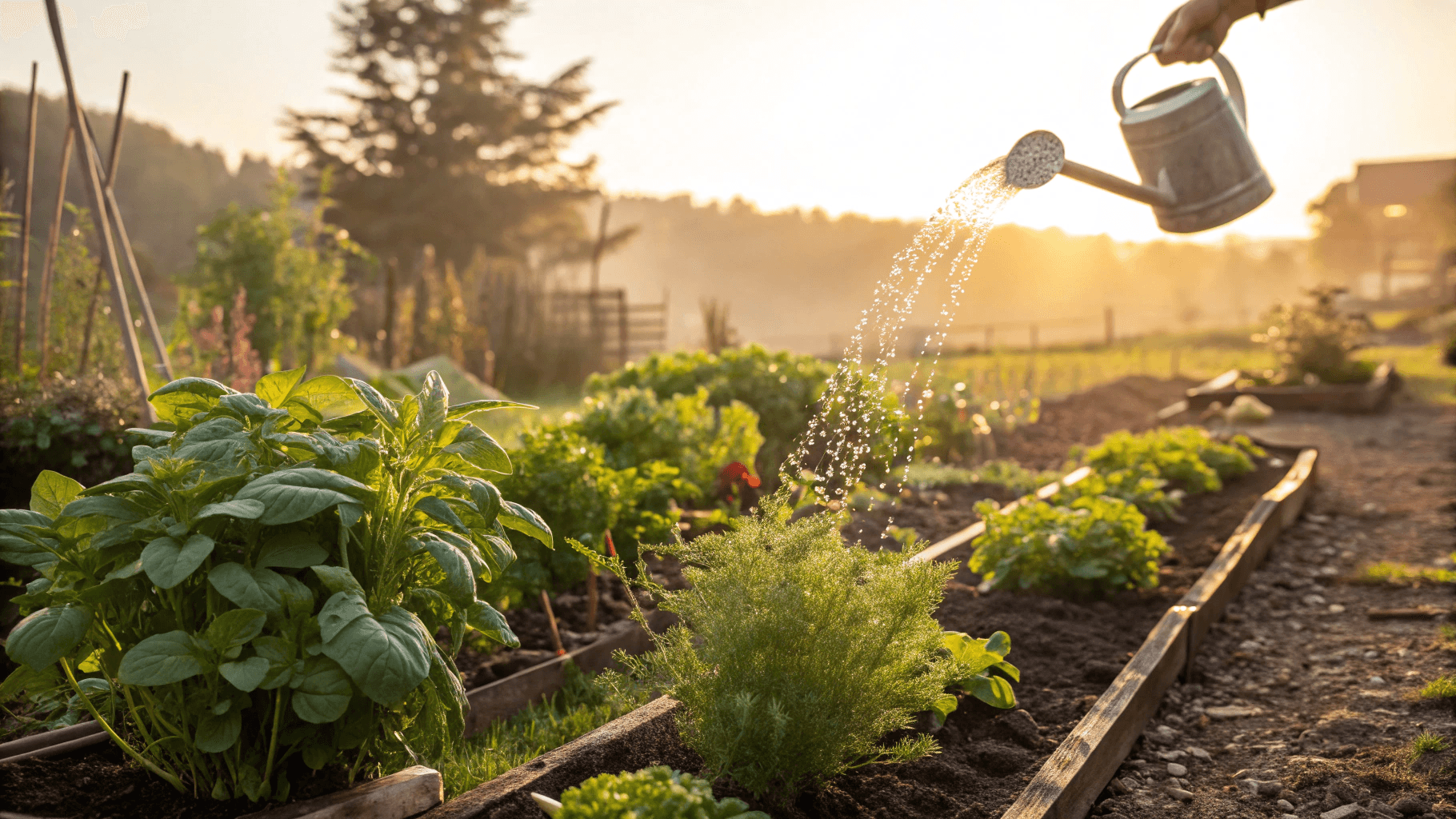
Watering Basics
- Water early morning or late afternoon (this helps reduce evaporation)
- Soak soil deeply (about 6 inches; this encourages roots to grow deep)
- Check soil with your finger before watering (if it feels dry, then it’s time to water)
In hot weather or raised beds, vegetables may need more frequent watering, while cooler weather requires less.
Feeding Vegetables Naturally
Some vegetables are heavy feeders, meaning they need plenty of nutrients to grow.
- Compost once or twice per season is enough
- Liquid compost tea or stinging nettle fertilizer works if plants look weak
Avoid synthetic fertilizers early on; they often cause fast growth but weak plants.
Weed and Pest Control
- Pull weeds regularly (I find it easier to remove them after rain when the soil is soft.)
- Space plants properly
- Inspect plants often for any signs of damage
- Use row covers; they protect plants from insects and birds
- Use organic solutions like neem oil if needed
- Encourage beneficial insects like ladybugs
Planting herbs like basil or marigolds can naturally deter some pests. Make sure to keep the garden clean, as debris can attract unwanted bugs.
Mulching Your Plants
Mulch is a protective layer placed on soil.
It helps:
- Keep soil moist
- Prevent weeds
- Protect roots from heat
Straw, leaves, or wood chips all work well.
Pruning Your Plants
- Remove yellow, damaged, or diseased leaves as soon as you see them
- Trim dead growth to improve airflow and reduce disease
- For herbs, regular trimming encourages bushier plants
You don’t need to prune most vegetables heavily. I prune in the early spring or late fall. Light, regular pruning is enough at this stage.
Step 11: Harvest Regularly and Learn as You Go
Harvest regularly rather than all at once, as this encourages more growth. Leaving overripe produce on the plant can attract pests and slow future growth.
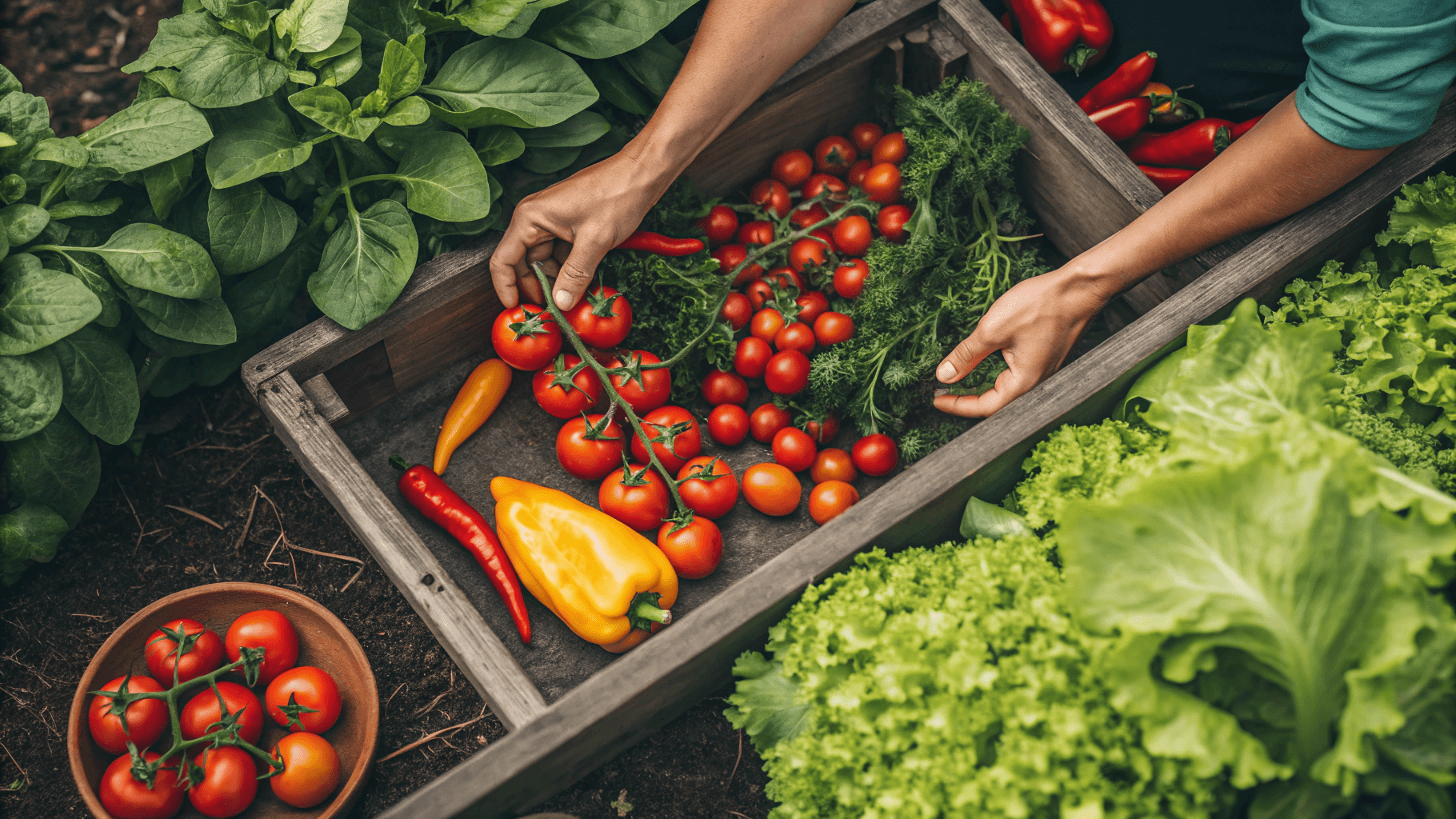
- Pick vegetables when ripe
- Harvest often, especially leafy greens
- Use clean, sharp tools to cut the produce, which prevents damage to the plant.
Every season teaches something new. Keep notes if you can, even mental ones help.
Common Beginner Gardening Mistakes (And How to Avoid Them)
Include:
- Starting too big
Start with a small garden or a few containers. This will allow you to learn the basics of gardening and see if this is a hobby you enjoy.
Overwatering
- Most plants prefer consistent moisture, not soggy soil. Always check the soil before watering.
- Planting too close
Overcrowding can lead to nutrient competition and increased disease risk.
- Ignoring sunlight needs
Many vegetables need at least 6-8 hours of sunlight. Observe your space before planting.
- Planting everything at once
Stagger planting times to spread out harvesting and reduce workload.
- Expecting perfection in the first season
Gardening is a learning process. Mistakes are normal and improve your skills each year.
- Ignoring soil quality
Poor soil leads to poor growth. Invest time in preparing your soil.
Conclusion
Starting a garden as a beginner doesn’t require perfection, expensive tools, or a large space. By focusing on vegetables, choosing a small area, and learning the basics of soil, sunlight, watering, and care, you can grow tasty food faster than you think.
Most successful gardeners start small. A few containers, a raised bed, or a simple garden plot is enough to learn what works in your space and climate.
Everyone starts gardening with zero experience. Gardening is a skill you build step by step. Some plants will thrive, others may struggle, and that’s part of the learning process. Each season teaches you something new, and with patience and consistency, growing your own food becomes easier and more rewarding every year.

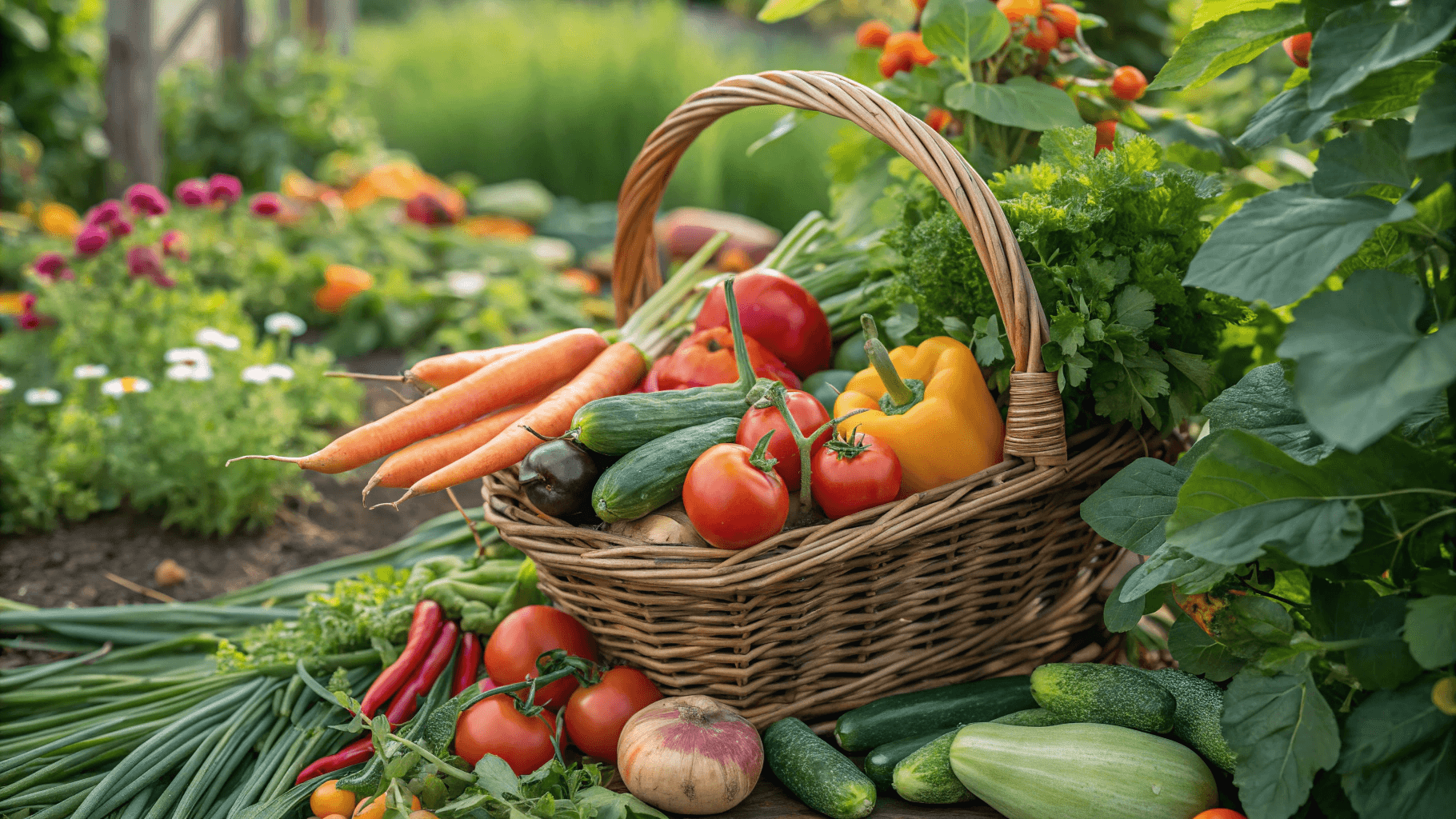
 ChatGPT
ChatGPT
 Perplexity
Perplexity
 Claude
Claude

Leave a Reply